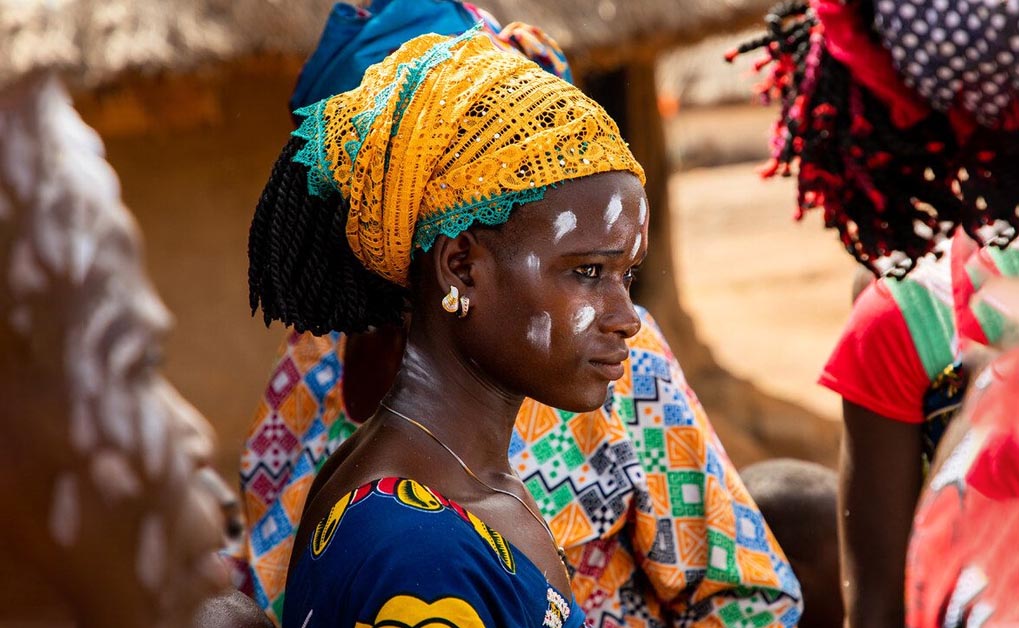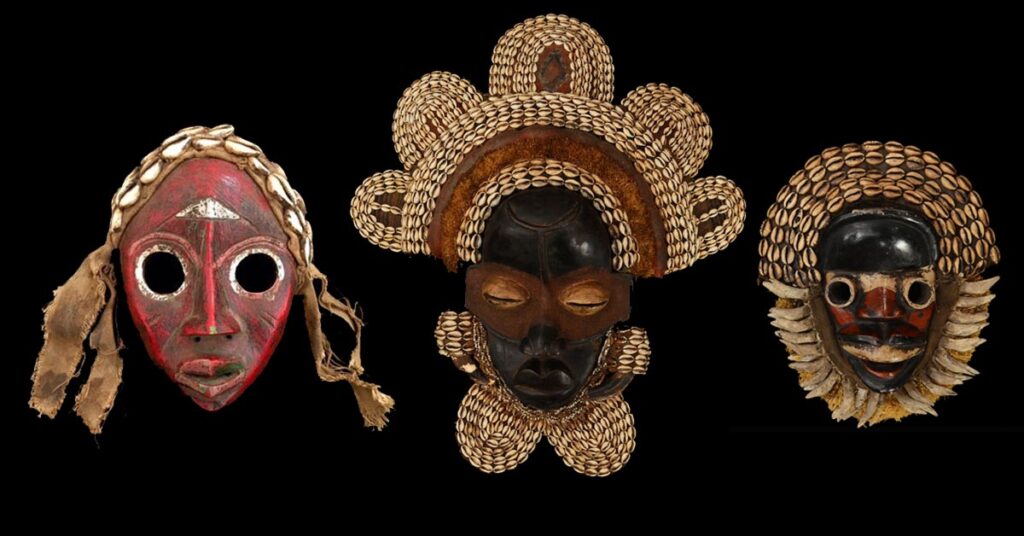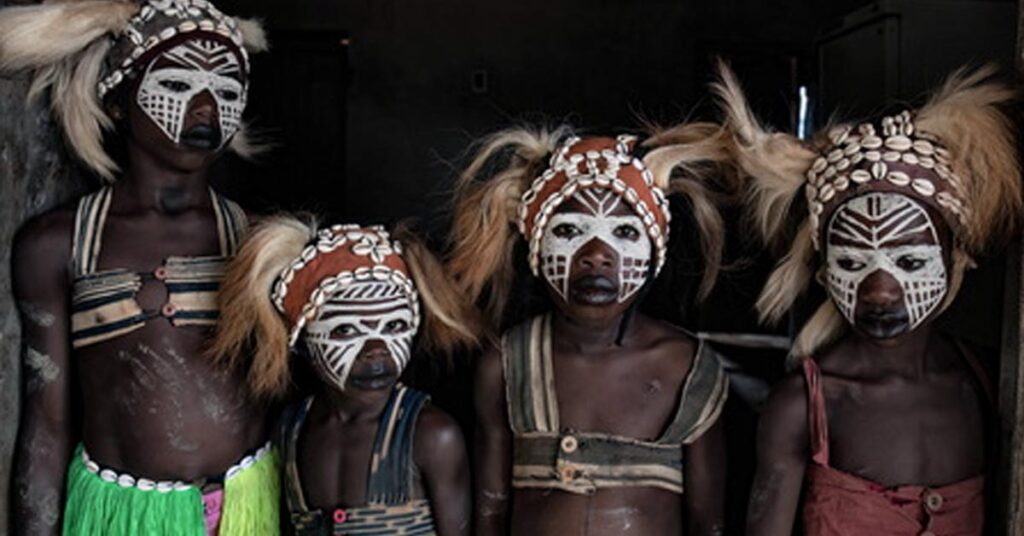The Dan people are an ethnic group belonging to the Mande community. They primarily reside in northwestern Ivory Coast and neighboring Liberia. With a population of around 700,000, their main settlement is in Man, Ivory Coast. They share their borders with neighboring communities such as the Mao, Krahn and Kpelle. In Ivory Coast, they are officially recognized as Yacouba (or Yakouba), while in Liberia, they are referred to as Gio. Although this term is considered derogatory (“slave” in Bassa).

History of the Dan People
Rooted deep in history, the Dan people have a legacy that spans centuries. Their ancestry can be traced back to the ancient Mandé and Kru peoples, shaping their unique cultural identity. Over time, they have endured and thrived, preserving their unique way of life amidst changing landscapes and evolving societies. Their rituals, deeply embedded in animistic beliefs, honor nature and ancestral spirits. Over generations, they have passed down their folklore, artistic skills, and spiritual practices. Painting a colorful tapestry of their enduring legacy in the heart of West Africa.

Language
The Dan people communicate in the Dan language, a Southeast Mande language.It’s a tonal language that reflects the nuances of their culture. While French has also found its way into their communities due to colonial influences, the preservation of their mother tongue remains pivotal to their identity.

Traditions and Ceremonies
The Dan people are renowned for their vibrant traditions, which include mask ceremonies and spirited dances. The mask ceremonies and spirited dances are central to the cultural and spiritual life of the Dan people. These rituals, often performed during harvest festivals and significant life events like funerals or initiations. The intricate masks, adorned with colorful embellishments, are a testament to their artistic prowess and spiritual beliefs.
Here is a detailed insight into how the Dan people conduct these captivating ceremonies:
Mask Ceremonies:
- Preparation and Ritual Significance: Before the mask ceremony begins, the community comes together to prepare the masks and other ceremonial items. Masks are often carved from wood and decorated with vibrant colors, symbolic patterns, and sometimes even animal attributes. Each mask design represents specific spirits, ancestors, or natural elements, and the choice of the mask depends on the purpose of the ceremony.
- Spiritual Invocations: The mask ceremony starts with spiritual invocations and prayers led by designated priests or elders. These invocations are meant to call upon the spirits and ancestors, inviting their presence into the masks. The belief is that during the ceremony, the mask becomes a vessel through which these spirits can communicate with the living.
- Dance and Performance: Once the masks are ritually activated, the masked dancers, often initiated members of the community, perform elaborate dances. These dances are characterized by intricate footwork, expressive gestures, and rhythmic movements. The dancers wear the masks, embodying the spirits they represent. The movements are not just choreography; they are believed to channel the energy and wisdom of the spirits.
- Community Participation: The entire community gathers to witness the mask ceremony. It’s a communal experience where everyone participates through singing, drumming, and clapping. The energy of the crowd adds to the intensity of the ceremony, creating a powerful spiritual atmosphere.
- Symbolism and Messages: During the dance, the masked performers convey messages from the spirits. These messages can be blessings, warnings, or guidance for the community. Skilled dancers can interpret subtle movements and gestures of the masks, understanding the symbolic language of the spirits.

Spirited Dances:
- Rhythmic Beats: Spirited dances of the Dan people are often accompanied by rhythmic drumming and other traditional musical instruments. The beats create a hypnotic atmosphere, enhancing the spiritual experience for both the performers and the audience.
- Costumes and Body Paint: Dancers wear elaborate costumes, which might include colorful textiles, beads, and body paint. These costumes are chosen based on the theme of the dance and often represent animals, elements of nature, or ancestral spirits.
- Expression and Connection: Spirited dances are highly expressive, allowing the dancers to connect with the spirits on a profound level. Through movements and gestures, dancers express stories, emotions, and spiritual concepts. It is believed that during these dances, the dancers enter a trance-like state, connecting with the spiritual realm.
- Community Bond: Spirited dances foster a sense of community and belonging. Through these dances, the community strengthens its ties, passing down traditions, stories, and cultural values from one generation to another.
In summary, the mask ceremonies and spirited dances of the Dan people are not just performances; they are deeply spiritual and communal experiences that connect the living with the spiritual world, honoring their ancestors and preserving their cultural heritage.

Common Crafts of the Dan People
Elaborate Woodcarvings: The Dan people are master woodcarvers, crafting exquisite masks, figurines, and utensils from indigenous woods. Each piece is meticulously carved, showcasing their exceptional craftsmanship. These carvings are not merely decorative items but hold profound cultural significance. Masks, for instance, are believed to embody spirits, serving as intermediaries between the physical and spiritual realms during ceremonies. Each carving tells a story, preserving their folklore and legends.
Textiles and Weaving: Textile weaving is another skill at which the Dan people excel. They create intricate fabrics using traditional looms, often incorporating vibrant patterns and colors. These textiles are not only symbols of their artistic talent but also play a role in their social and religious ceremonies, symbolizing unity and heritage.
Metalwork and Jewelry: Metalwork, especially in crafting jewelry, is a cherished tradition among the Dan people. Skilled artisans create stunning pieces using brass and other metals, intricately designed with motifs inspired by nature and spirituality. These jewelry items are worn during ceremonies and hold deep cultural significance, signifying social status, spirituality, and protection.
In conclusion, the Dan people are guardians of a rich cultural legacy. Preserving their traditions through masterful crafts that echo their history and beliefs. Through their artistry, they bridge the gap between the past and the present. Allowing the world to glimpse into the captivating world of West African heritage.
































